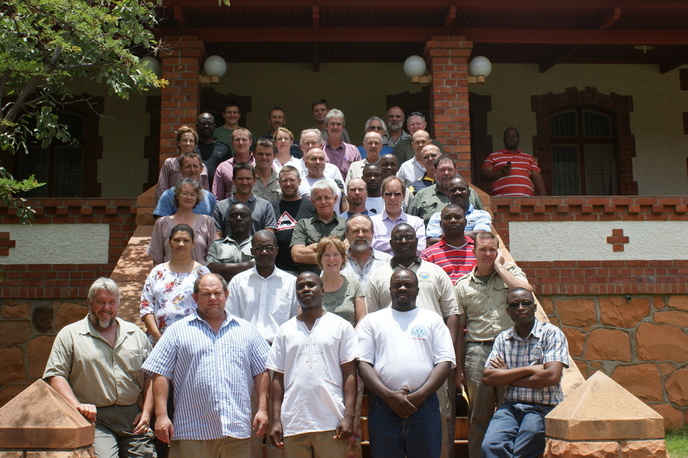The US Fish & Wildlife Service convened forty experts from across African rhino range states to address rhino security from November 25-29, 2012 in Waterberg Plateau Park in Namibia. The meeting was generously co-sponsored by the Namibian Ministry of Environment and Tourism and Save the Rhino International.
Participants included wildlife managers, security experts and law enforcement officers working on rhino conservation in Kenya, Malawi, Namibia, South Africa, Swaziland, Tanzania, Zambia, and Zimbabwe. The meeting brought together field practitioners working to protect Africa’s rhino populations in East and Southern Africa in order to identify diplomatic interventions and technological equipment that could vastly improve rhino survival.
The meeting provided the opportunity to 1) introduce field practitioners to others facing similar challenges, 2) allow field people to share knowledge on which techniques and technologies are working and which are not, and under what conditions/circumstances and 3) to advise USFWS and other US Government agencies on how best to contribute to improved rhino security through technology or policy. The meeting also included practical sessions to demonstrate and test new technologies including unmanned aerial vehicles and rhino marking and tracking equipment.
As a result of discussions at the meeting, USFWS has compiled an outline of opportunities for policy changes at the international, regional and national levels in rhino range states, and a list of standard equipment needs for rhino areas.









